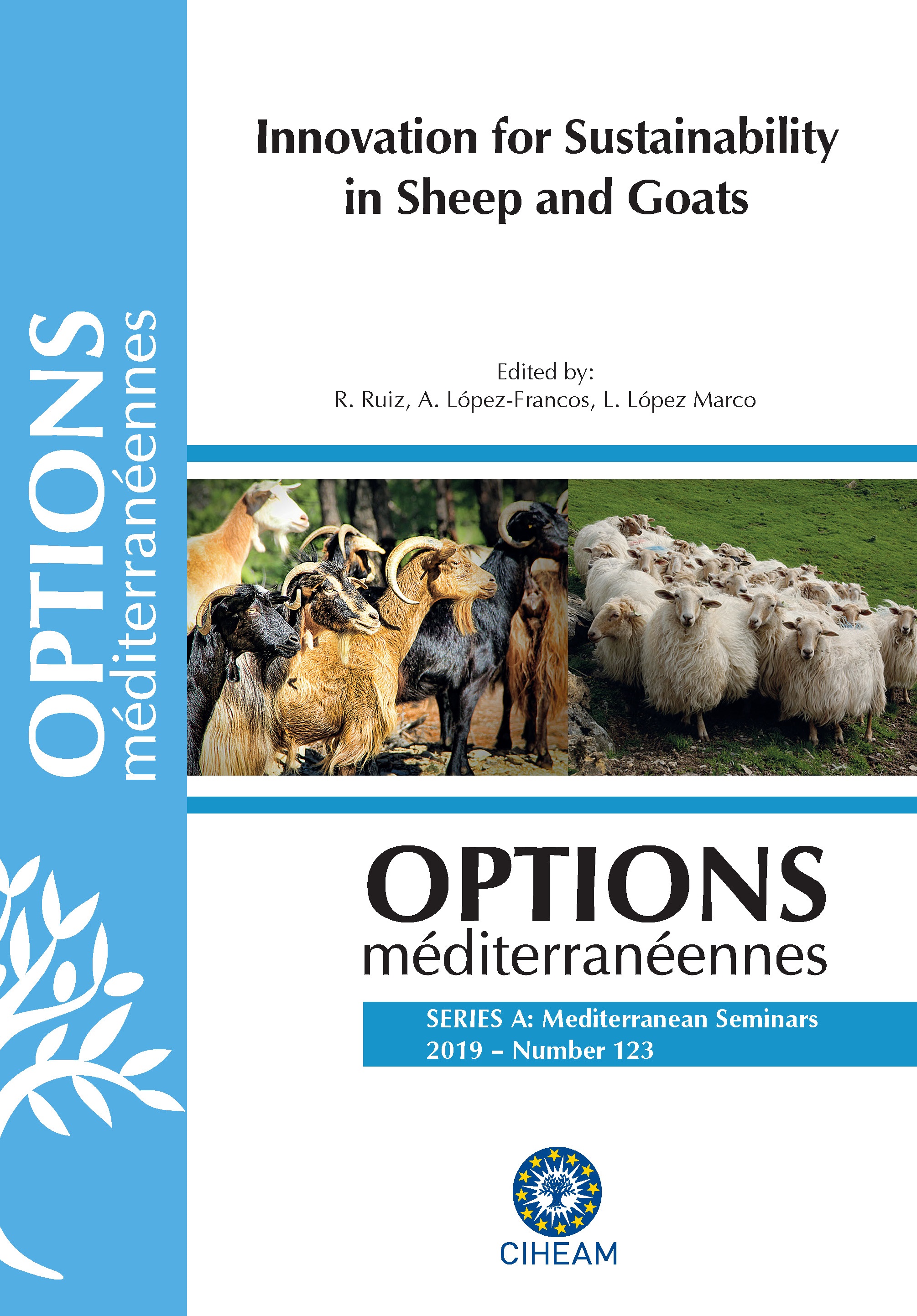| Article précédent | p. 341-344 | Article suivant |
Phenotyping intake rate in dairy goats, a repeatable trait which can be measured automatically
In intensive systems, high producing animals are at risk of acidosis due to the high proportion of concentrates in their diet. There is considerable variability between individuals in occurrence and severity of acidosis which is likely related to feeding behaviour. Phenotyping this behaviour could explain some of the variation in digestive efficiency, and therefore in feed efficiency. Feeding behaviour was assessed at three periods (1st and 2nd lactations, 2nd gestation) on thirty-five contemporary goats. The evolution of feed intake during 15 hours after the afternoon allowance was measured individually every 2 min for 3 days. Two phenotypes were calculated: Q90 (quantity of diet consumed during the first 90 minutes post-feeding), P90 (Q90/quantity consumed during 15 hours). Intra-period individual repeatability was very high. The value for one period was highly correlated with that of a preceding one for P90, but poorly for Q90. Given this repeatability, it would be possible to characterise the feeding behaviour of all the goats during their first lactation and, in the following lactations, to restrict feed allowance of those with the highest P90 or Q90 in order to decrease the occurrence of acidosis in the herd, and thereby increase efficiency. These results on the variability of intake rate show that simple criteria to phenotype goats on intake rate can be applied in precision livestock farming systems.
Dans les systèmes intensifs, les animaux hauts producteurs reçoivent une ration riche en aliments concentrés, mais peuvent souffrir d’acidose avec une occurrence et une intensité variables d’un animal à l’autre qui seraient liées au comportement alimentaire. Le phénotypage de ce comportement expliquerait une partie des variations de l’efficacité de la digestion, et donc de l’efficacité alimentaire. Ce comportement a été mesuré à trois périodes (1ère et 2nde lactations, 2nde gestation) sur trente-cinq chèvres contemporaines. L’évolution de l’ingestion pendant les 15 heures suivant la distribution de l’après-midi a été mesurée individuellement toutes les 2 min pendant 3 jours. Deux phénotypes ont été calculés : Q90 (quantité d’aliment ingérée pendant les 90 minutes suivant la distribution), P90 (Q90/quantité ingérée en 15 h).La répétabilité individuelle était très élevée intra-période. La valeur à une période donnée était fortement corrélée à celle de la période précédente pour P90, mais faiblement pour Q90. Ainsi, il serait possible de caractériser le comportement alimentaire de toutes les chèvres pendant leur première lactation et, pour les lactations suivantes, de restreindre la quantité d’aliment distribuée pour celles présentant les plus hauts P90 ou Q90 afin de diminuer l’apparition de l’acidose dans le troupeau, et donc d’augmenter son efficacité. Ces résultats sur la variabilité de la vitesse d’ingestion montrent que des critères simples peuvent être proposés pour phénotyper les chèvres dans le cadre de l’élevage de précision.
- [ Afficher ]
- [ Télécharger ]
- [ Exporter la citation ]
Vous pouvez télécharger la citation au format :
- [ Imprimer ]
-
Mots-clés
ANIMAL LAITIER, CHEVRE, ELEVAGE, INGESTION, PHENOTYPECiter cet article
Giger-Reverdin S., Duvaux-Ponter C., Friggens N.C. Phenotyping intake rate in dairy goats, a repeatable trait which can be measured automatically. In : Ruiz R. (ed.), López-Francos A. (ed.), López Marco L. (ed.). Innovation for sustainability in sheep and goats. Zaragoza : CIHEAM, 2019. p. 341-344. (Options Méditerranéennes : Série A. Séminaires Méditerranéens; n. 123). 2. Joint Seminar of the Subnetworks on Nutrition and on Production Systems of the FAO-CIHEAM Network for Research and Development in Sheep and Goats, 2017/10/03-05, Vitoria-Gasteiz (Spain). http://om.ciheam.org/om/pdf/a123/00007909.pdf



